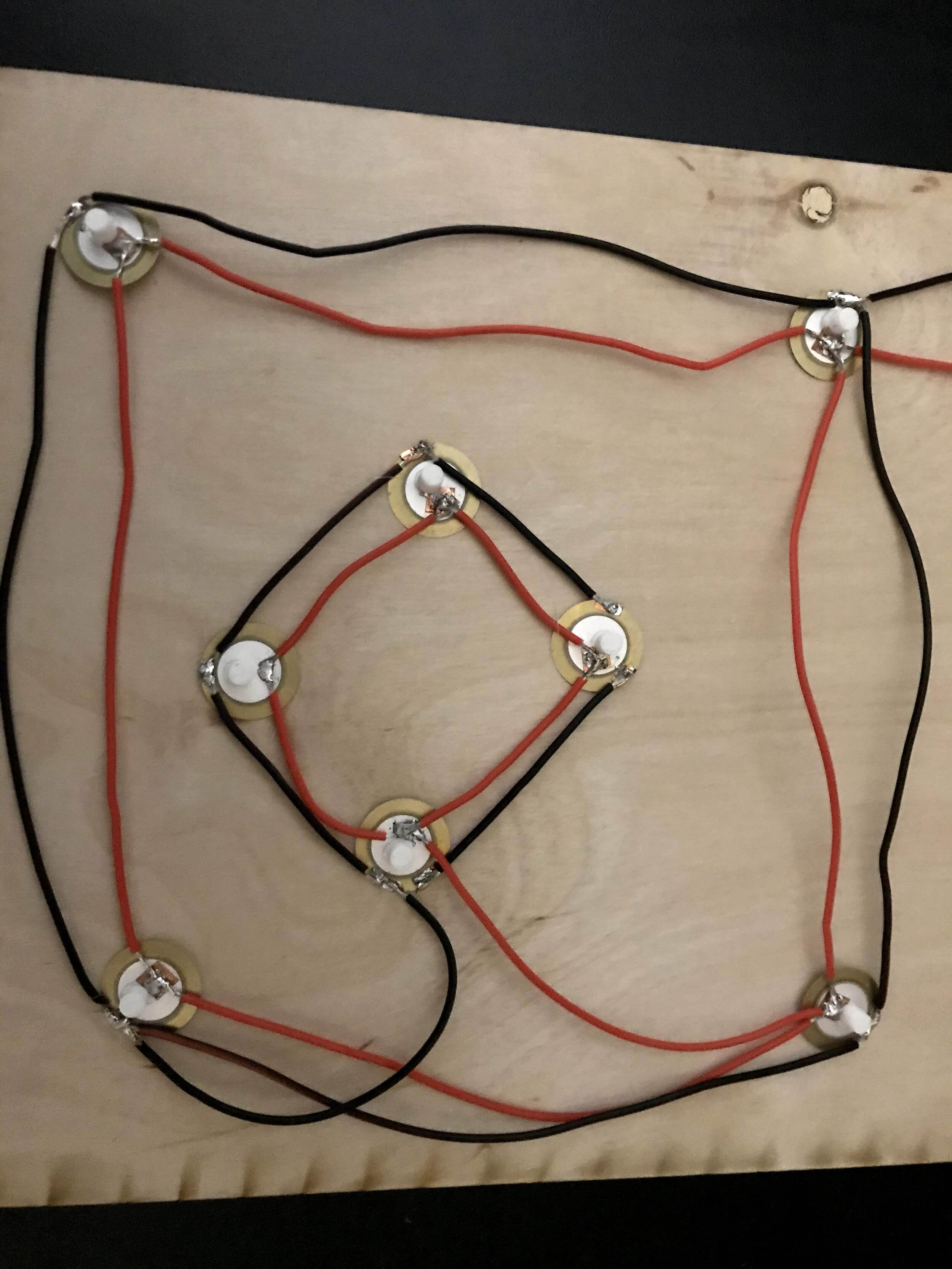Design Studio - Semester Long Project
Design and build an installation that will allow two or more people to have an IRL interaction with each other in a unique way.
Our groups original concept was to develop a game that 2 people could play together. The control system would consist of tiles the players could step on and a series of turnable hand controls. The game itself would be projection mapped onto a wall of recycled electronics. Unfortunately, because of social distancing restrictions, we were unable to fully realize this vision. I decided to move forward with the control system and make it the center piece of my individual project.
Design schematic created by my group
The hand controls are potentiometers. The plan was to 3-D print attachments for the them to make them into wheels and a sort of throttle. Unfortunately, this 3-D printing was unable to be completed before campus shut down, so the knobs on the potentiometers must be used.
The tiles in the control system are made from a series of piezo transistors soldered together. These transistors take advantage of the piezoelectric effect, meaning they generate voltage in response to a mechanical strain. Because of this, no voltage needs to be run to them, reducing the overall power requirements of the control system. Each tile is made up of 8 piezos and 3-D printed posts were attached to each allowing the load of somebody pressing or stepping on the tile to be evenly distributed.
To demonstrate the use of this novel control system, I built a simple game in processing. My thought is that you could turn any microcontroller into a miniature game console, like what some have done with Raspberry Pi. My demo game is Pong, but I put my own twist on it to incorporate all of the controls. Each player moves their paddle with a potentiometer. Throughout the game, players can collect special points that appear on the screen. Given enough of these points, the players can press one of their tiles to perform a special move. Pressing or stepping on left tile causes their paddle to triple in size for 30 seconds, and the right tile makes their next hit travel about twice as fast.
I think the control system proved to be effective and could be applied to a variety of different games. Although it is probably better suited to be used in an arcade or an installation rather than in a home. That way it could be built into the platform we had originally envisioned, making it more durable.









